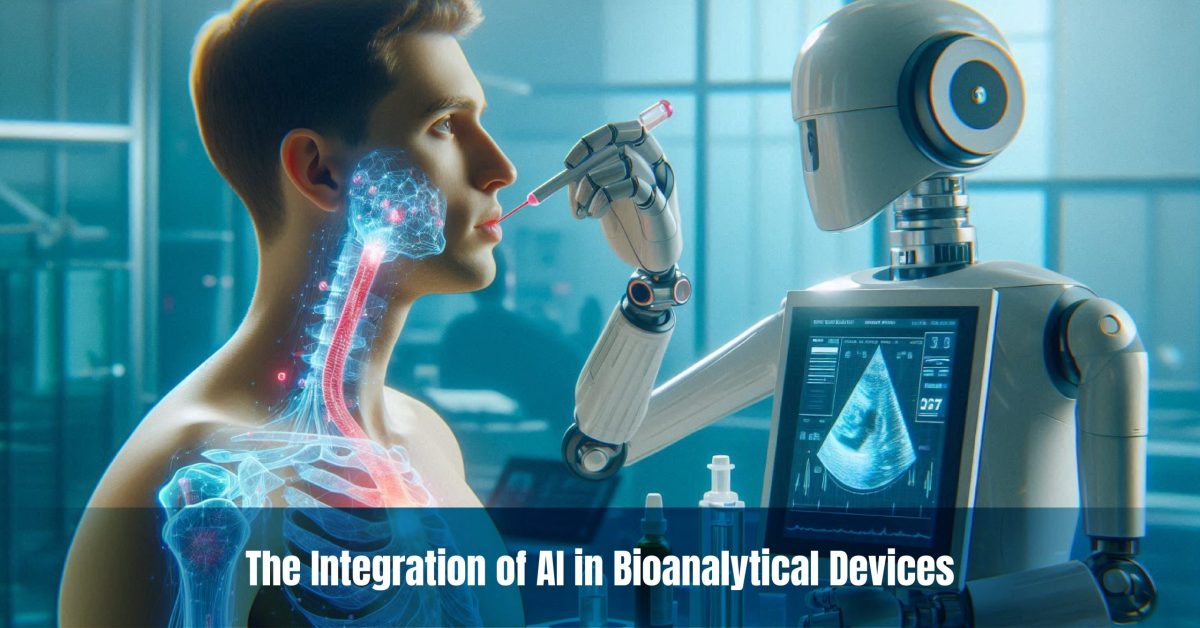Traditionally, the bioanalytical device was restricted only to sample analysis chemically and biologically. Everything changed after artificial intelligence was incorporated into the bioanalytical device. The integration of technology allows devices not only to deliver analysis with higher precision and speed but also to change according to real-time data, thereby making their functionality more relevant across different sectors, including health, environment, and drug development. Developing AI within bioanalytical devices introduces advancement in the direction of the next generation of smarter, autonomous systems that learn patterns, improve precision, and reduce human intervention. In this blog, we discuss the roles AI plays in bioanalytical devices, with special emphasis given to its influence on diagnostics, monitoring, and therapeutic developments.
The Evolution of Bioanalytical Devices with AI
The last few decades have driven the development of bioanalytical devices, but ones reliant purely on chemistry principles were later enriched with sensor technology and system data acquisition. One drive of this progress was developing the systems to become increasingly sensitive, selective, and accurate for detecting biological markers. Since nanotechnology and material science started to be more broadly applied to device design, they became smaller and more efficient in terms of performance delivery and even allowing real-time monitoring. That has not been the largest shift of all, though the integration of AI.
AI enhances the functionality of such devices by permitting machine learning algorithms to process large datasets. For example, AI-based analysis of sensor data can indicate trends that human operators may not even identify. Also, AI algorithms learn from the data collected and generate more accurate calibrations as well as predict trends. The self-learning feature is a significant advancement for such machines, which have been fitted with long-term monitoring applications or require quick diagnostic decisions.
AI in Diagnostics
Diagnosis would probably be among the most obvious applications of AI in devices used for bioanalysis. Using AI, devices can analyze huge volumes of data obtained from biological samples such as blood, saliva, and even sweat. These enable a device to determine a disease much more quickly and accurately. The ability of diagnostic devices based on AI to function well with pattern recognition capabilities, for instance, the ability to identify biomarkers that may indicate chronic diseases, infections, or metabolic disorders-ends.
For instance, an all-printed, AI-based multimodal robotic sensing system combines human-machine interfaces with soft electronic skin for remote diagnostics. The algorithms of AI process data from diverse physicochemical sensors that monitor hazardous substances such as infectious pathogens like SARS-CoV-2. For this reason, such a system can make decisions autonomously based on data collected to minimize the time required to monitor and respond in real time to hazardous conditions.
AI also puts a lot of importance on point-of-care diagnostic devices and minimal resource settings. With the inclusion of AI, bioanalytical devices can be positioned even at remote locations that need to be diagnosed with a minimum level of intervention from humans. For example, electrochemical biosensors that work on AI are used for monitoring biomarkers that can be extracted from serum or saliva, thereby doing away with the need for complex laboratory settings. These equipments are very prompt in their results, which becomes very crucial in disease intervention at the onset.
